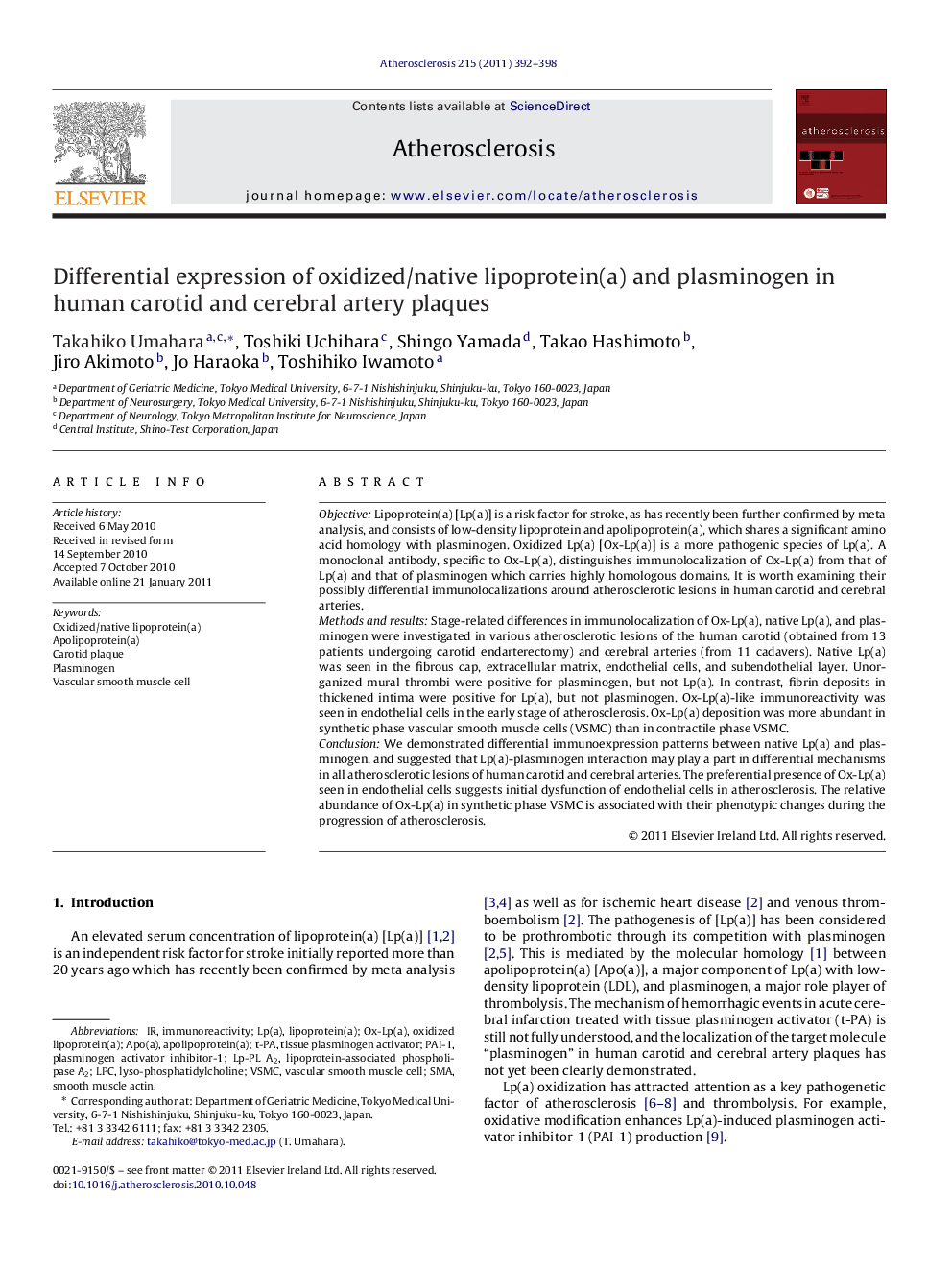| کد مقاله | کد نشریه | سال انتشار | مقاله انگلیسی | نسخه تمام متن |
|---|---|---|---|---|
| 5950787 | 1172402 | 2011 | 7 صفحه PDF | دانلود رایگان |

ObjectiveLipoprotein(a) [Lp(a)] is a risk factor for stroke, as has recently been further confirmed by meta analysis, and consists of low-density lipoprotein and apolipoprotein(a), which shares a significant amino acid homology with plasminogen. Oxidized Lp(a) [Ox-Lp(a)] is a more pathogenic species of Lp(a). A monoclonal antibody, specific to Ox-Lp(a), distinguishes immunolocalization of Ox-Lp(a) from that of Lp(a) and that of plasminogen which carries highly homologous domains. It is worth examining their possibly differential immunolocalizations around atherosclerotic lesions in human carotid and cerebral arteries.Methods and resultsStage-related differences in immunolocalization of Ox-Lp(a), native Lp(a), and plasminogen were investigated in various atherosclerotic lesions of the human carotid (obtained from 13 patients undergoing carotid endarterectomy) and cerebral arteries (from 11 cadavers). Native Lp(a) was seen in the fibrous cap, extracellular matrix, endothelial cells, and subendothelial layer. Unorganized mural thrombi were positive for plasminogen, but not Lp(a). In contrast, fibrin deposits in thickened intima were positive for Lp(a), but not plasminogen. Ox-Lp(a)-like immunoreactivity was seen in endothelial cells in the early stage of atherosclerosis. Ox-Lp(a) deposition was more abundant in synthetic phase vascular smooth muscle cells (VSMC) than in contractile phase VSMC.ConclusionWe demonstrated differential immunoexpression patterns between native Lp(a) and plasminogen, and suggested that Lp(a)-plasminogen interaction may play a part in differential mechanisms in all atherosclerotic lesions of human carotid and cerebral arteries. The preferential presence of Ox-Lp(a) seen in endothelial cells suggests initial dysfunction of endothelial cells in atherosclerosis. The relative abundance of Ox-Lp(a) in synthetic phase VSMC is associated with their phenotypic changes during the progression of atherosclerosis.
Journal: Atherosclerosis - Volume 215, Issue 2, April 2011, Pages 392-398